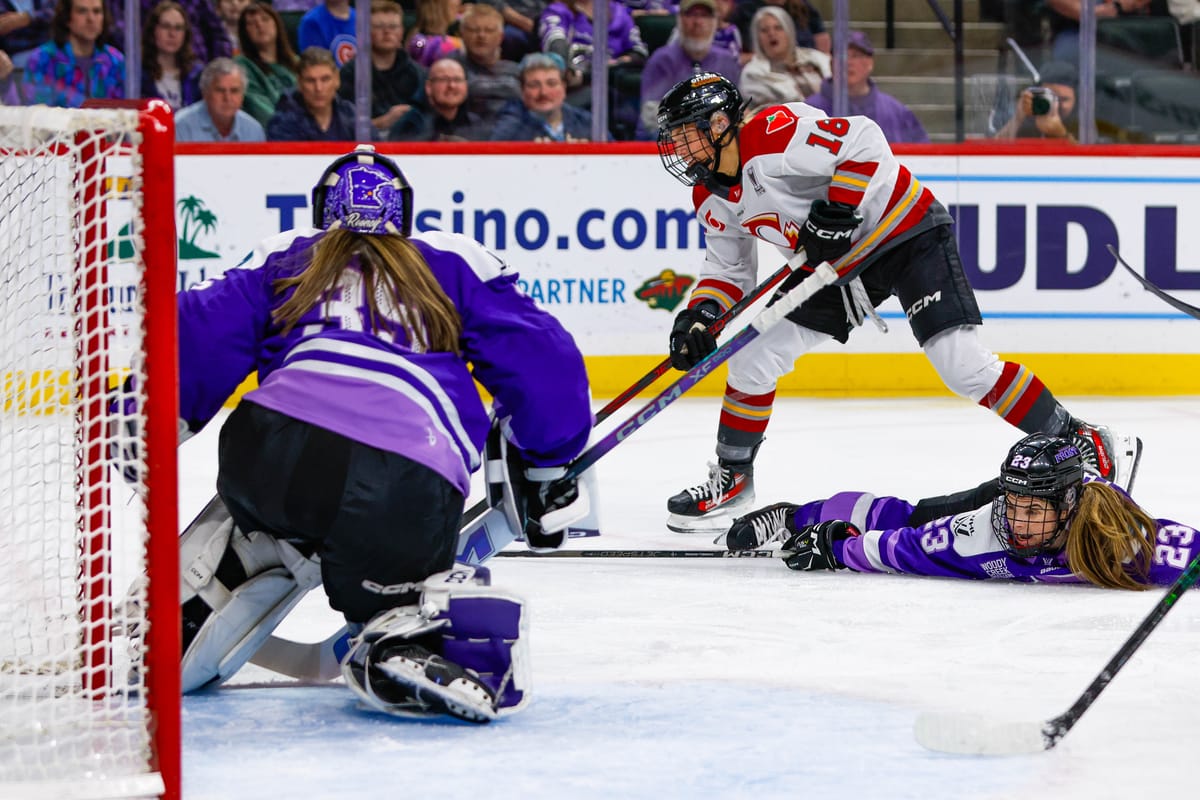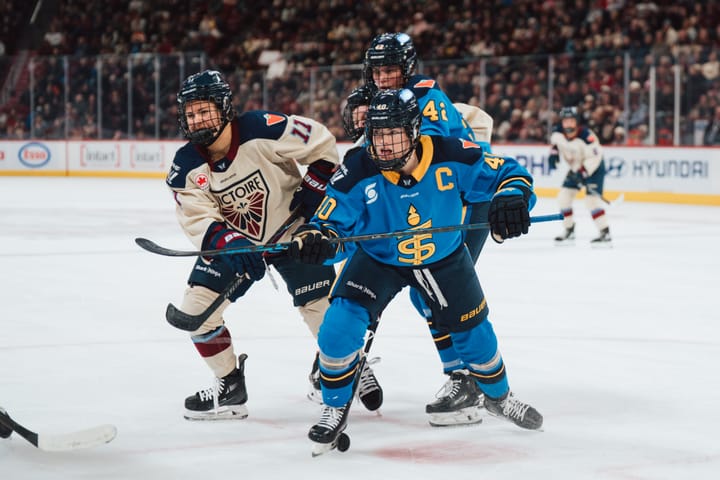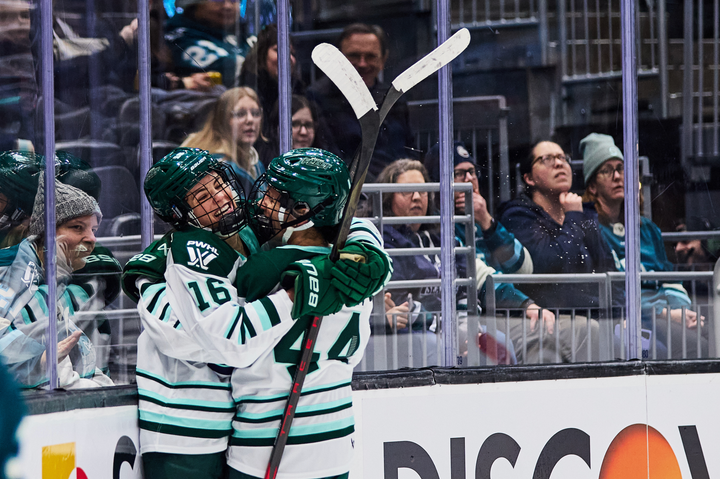Tweaking the PWHL Playoff Format
What might the PWHL's Walter Cup Playoffs format be with eight teams in the league?

As the PWHL prepares to enter its third season - and its first with eight teams - there’s a lot to be considered with expansion. One such topic: the Walter Cup playoff format.
In its first two seasons, the playoff format saw the top four teams make it into the postseason. The top seed was allowed to pick its opponent from the third- or fourth-overall seeds. Both rounds were played as a best-of-five series.
Inevitably, things are going to change now. I cannot imagine that the PWHL would want to stick with its current format, as that would mean only half of the teams make it into the playoffs. So what are the options?
Option #1: A Cross-Border Battle
My first option actually involves dividing the teams into two divisions for standings purposes, then using their respective divisional rankings to determine playoff matchups. With the additions of Seattle and Vancouver, the league splits perfectly into two divisions: American and Canadian.
When the NHL had eight teams in the 1931-32 season, it adopted American and Canadian divisions, even though it wasn’t actually an even split then. (The New York Americans played in the Canadian Division.)
Sample Standings
American Division
- Seattle
- Minnesota
- Boston
- New York
Canadian Division
- Vancouver
- Montréal
- Toronto
- Ottawa
From here, you have several options for a revamped playoff format.
Option #1A: Minimize Cross-Border Travel Early On
The first option would see the first and second rounds take place within their respective divisions, minimizing the need for cross-border travel early on in the playoffs. I’m keeping everything as a five-game series here; I think three is a tad short, but seven can be a bit long.
- American #1 vs. American #4 (or, allow #1 to pick its opponent from 3/4)
- American #2 vs. American #3
- Canadian #1 vs. Canadian #4 (or, allow #1 to pick its opponent from 3/4)
- Canadian #2 vs. Canadian #3
In the second round, the respective winners of the American series would play one another, while the respective winners of the Canadian series would play one another.
Finally, the winners of those two series would square off in the championship.
Option #1B
The second option is cross-division, which means more cross-border travel. Not saying that’s a good thing or a bad thing, just providing some options here.
- American #1 vs. Canadian #4
- American #2 vs. Canadian #3
- American #3 vs. Canadian #2
- American #4 vs. Canadian #1
Winners of the 1v4 series play the winners of the 2v3 series in the second round. Maybe whichever team finished with more points or a better record gets to pick which series they’ll play the winner of.
From there, the winners of those series face off for the championship.
Option #1C: True & Total Chaos
Now, if you really want to have some fun… say screw it and we go best-on-best to start.
- American #1 vs. Canadian #1
- American #2 vs. Canadian #2
- American #3 vs. Canadian #3
- American #4 vs. Canadian #4
Winners move on to the second round, where it’s the #1 seed remaining vs the #4 seed remaining, and the #2 seed vs. the #3 seed. Finally, the winners play for the title in the last round.
Realistically, I don’t think this would happen, because it would instantly push one of your best teams out in the first round, but hey, it’s fun to think about, at least.
Option #1D: Been Done Before
Of course, we could take inspiration from how the NHL handled its playoffs with this divisional format. It sure was an interesting format, according to Wikipedia:
“The top three teams in each division qualified for the playoffs. The two division winners met in a best-of-five semifinal series. The divisional 2nd place teams and 3rd-place teams played off in a two-game, total-goals series to determine the participants for the other two-game, total-goals semifinal series. Semifinal winners then played in a best-of-five Finals.”
It’s certainly something.
Option #2: Straight Eight
Historically, the PWHL hasn’t allowed all of its teams to make the postseason tournament, but with this re-working, it’s something to consider. This is the simplest and most common format - which has its benefits, but at the same time, the league is always trying to be innovative, and this seems to go against that approach.
Here, the eight teams are seeded in a standard #1 through #8 format.
First round: #1 vs. #8, #2 vs. #7, #3 vs. #6, #4 vs. #5
Second round: Highest seed vs. lowest seed; other two teams face off
Championship: Remaining teams face off
Option #3: A Different Divisional Alignment
If we were to try and split the teams into divisions geographically, it’s not very straightforward. Vancouver, Seattle and Minnesota could go in the “west,” but there’s not really a good fourth option to complete that division right now. The other five teams are very much located in the east; there’s just no way around it.
But, if we’re willing to get a little uncomfortable, hear me out: the divisions don’t have to be even. There’s precedent here, too. In the AHL, there are two divisions with seven teams each; one division with eight teams, and one division with 10 teams. It can be done, it just has to be handled the right way.
So what if we have these two divisions:
Western Division (gosh, what a division this would be!)
- Seattle
- Vancouver
- Minnesota
Eastern Division
- Montréal
- Boston
- Toronto
- Ottawa
- New York
Here, we have another opportunity for a unique playoff format. We can play around with ideas. Perhaps the Eastern Division starts with a #2 vs #5 and #3 vs 4. That would leave both divisions with three teams - six teams total. Maybe that first play-in round is only a single-game elimination, or a best-of-three, to shorten things.
The #1 seed in each division receives another bye, leaving the two remaining seeds in each division to battle. The #1 seeds would then face the remaining teams, and those winners then go for the championship. It’s a longer playoff, sure, but it’s certainly exciting and means everyone has a chance. Of course, every team doesn’t have to have a chance, either.
Or, to make it even shorter, perhaps only the top three teams in the Eastern Division make it.
Or, maybe only the top two seeds in each division make it; it’s straightforward from there.
So… What’ll It Be?
I don’t know what the playoff format will look like in the PWHL with eight teams, but there’s room to be creative and try things outside the box here. Whatever format the league goes with, whether you love it or hate it, just remember: it could all change again soon, if further expansion is indeed on the horizon in the coming years. What could a 10-team league’s playoff look like? How about for 12 teams?





Comments ()